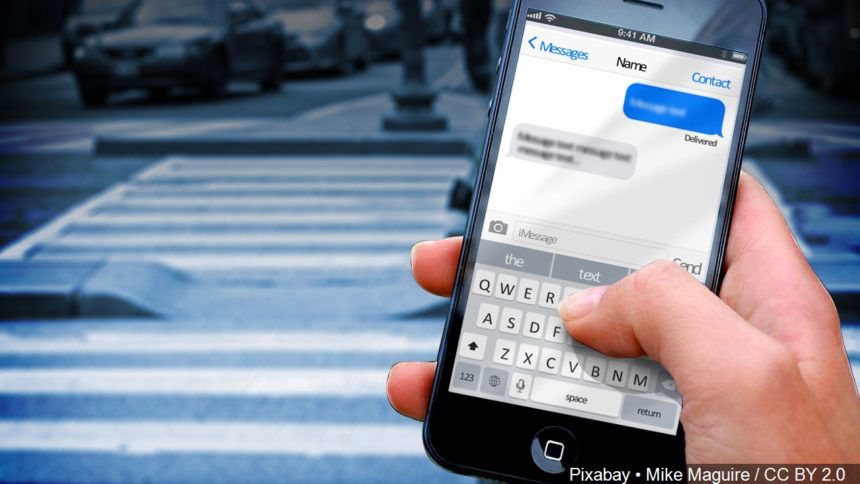Santa Barbara County now allows Text-to-911 during emergencies

SANTA BARBARA COUNTY, Calif. - "Call if you can -- text if you can’t” is the slogan for Santa Barbara County's newest emergency service: Text-to-911.
The program allows community members who are hearing and speech-impaired, or anyone who is in a situation where it is too dangerous to speak over the phone, to text the emergency number for help.
The dispatch centers at the Santa Barbara County Sheriff's Office, Santa Barbara Police Department, UCSB Police Department, Lompoc Police Department, Santa Maria Police Department and Vandenberg Air Force Base Primary Public Safety Answering Point, which all answer 911 calls for emergency services within the county are now equipped to receive and respond to mobile phone SMS Text-to-911 messages.
All dispatchers have also been trained to receive and respond to any text messages.
The County said this service is mainly available for the deaf, hard-of-hearing, speech-impaired and those in situations where it is too dangerous to call such as domestic abuse, when the caller is hiding from an attacker or when the caller has been injured in a way that inhibits their ability to speak.
Phones and devices must have a text or data plan in order to be able to send texts to 911.
Sheriff Bill Brown, the chairman of the Santa Barbara County Law Enforcement Chiefs (CLEC) Association, said, “My fellow law enforcement chief executives and I welcome the addition of this important technology to our county’s emergency dispatch systems. We are especially pleased that each Primary Public Safety Answering Point (PSAP) dispatch center now has the ability to receive these messages. Text to 9-1-1 is especially important during the COVID-19 pandemic. Stay at home orders and practices can put victims of domestic violence, child abuse and elder abuse into almost constant close proximity to their abusers and thus inhibit their ability to report crimes verbally by telephone. Text to 9-1-1 gives victims of, and witnesses to, these crimes another way to report them and obtain help.”
The Federal Communications Commission created a set of guidelines for the community to follow when texting 911 during an emergency:
- If you can, always contact 9-1-1 by making a voice call, “Call if you can – text if you can’t.”
- If you are deaf, hard-of-hearing or speech disabled, and Text-to- 9-1-1 is not available, use a TTY or telecommunications relay service, if available.
- Text messages can take longer to send/receive and may be sent out of order due to delays.
- If you text 9-1-1 and text is not available in your area, you will receive a bounce-back message advising “text is not available please make a voice call to 9-1-1.”
- Location accuracy varies by carrier and should not be relied upon. Be prepared to give your location.
- Text-to-9-1-1 service will not be available if the wireless carrier cannot ascertain a location of the device sending the message.
- Text-to-9-1-1 is not available if you are roaming.
- A text or data plan is required to place a text to 9-1-1.
- Photos and videos cannot be sent to 9-1-1. They cannot be received at the 9-1-1 centers at this time.
- Text messages should be sent in plain language and not contain popular abbreviations (SMH, LOL, ICYMI) or emojis, which will not be recognized.
- Text-to-9-1-1 cannot be sent to more than one person. Do not send your emergency text to anyone other than 9-1-1.
- The cost of Text to 9-1-1 services are included in the 9-1-1 surcharge tax and funded through the State Emergency Telephone Number Account, administered by the California Office of Emergency Services, 9-1-1 Branch.
- Text-to-9-1-1 is not available in all areas of the State yet.
The County said that, whenever possible, 911 texts should be written in English as there is currently no automated language interpretation for text available. However, this is still in development. Dispatchers will attempt to translate any non-English texts they receive, however, that extra effort will create a delay in their response.
This announcement comes after the nation's four largest wireless service providers, AT&T, Sprint, T-Mobile and Verizon Wireless, in cooperation with the FCC, National Emergency Number Association, and the Association of Public Safety Officials agreed in 2012 to provide Text-to-9-1-1 as a nationwide interim solution until the Next Generation of 9-1-1 is deployed.
